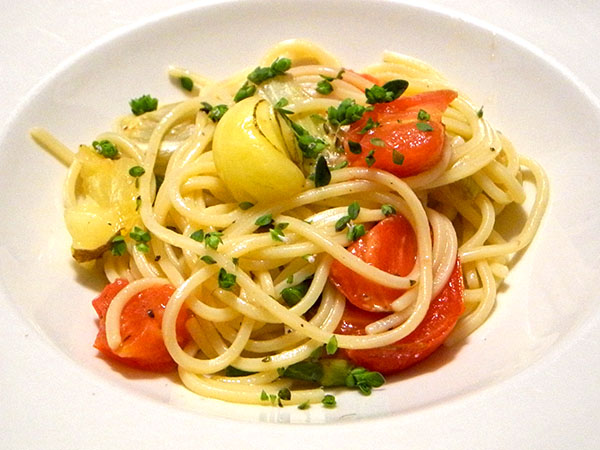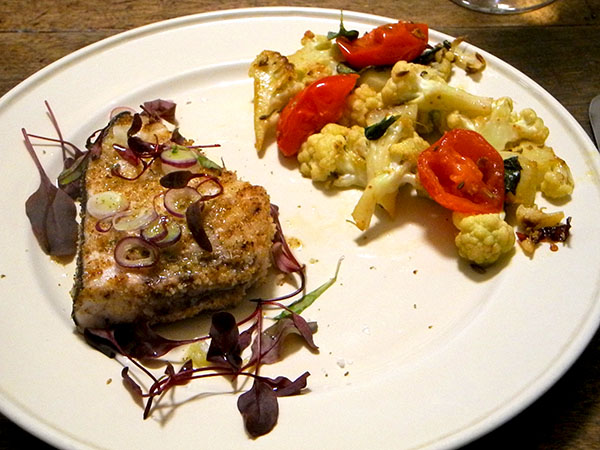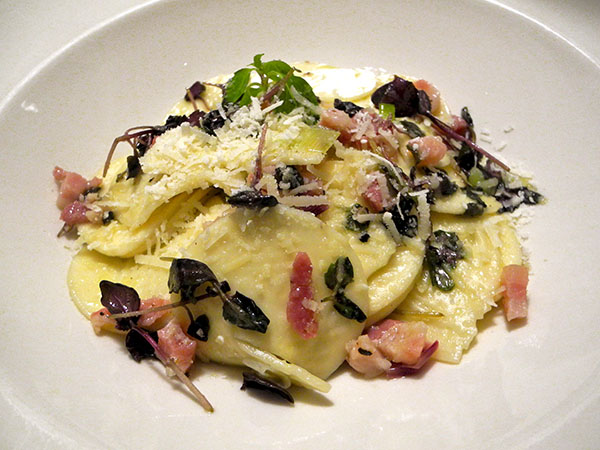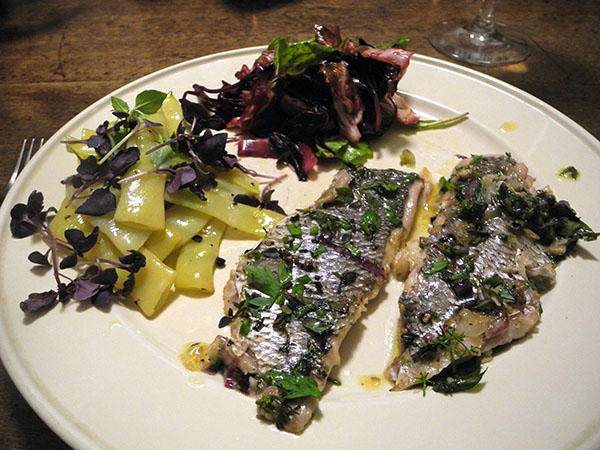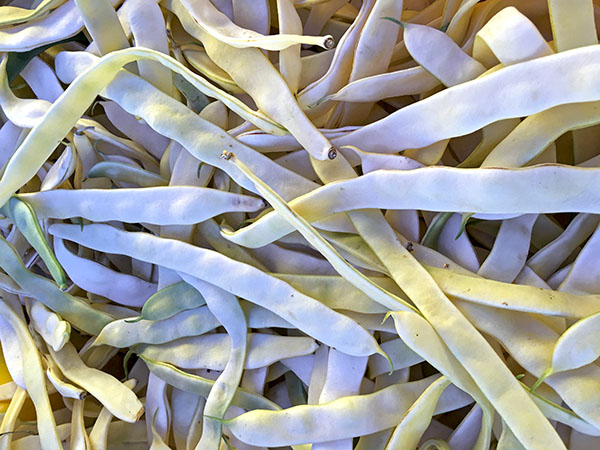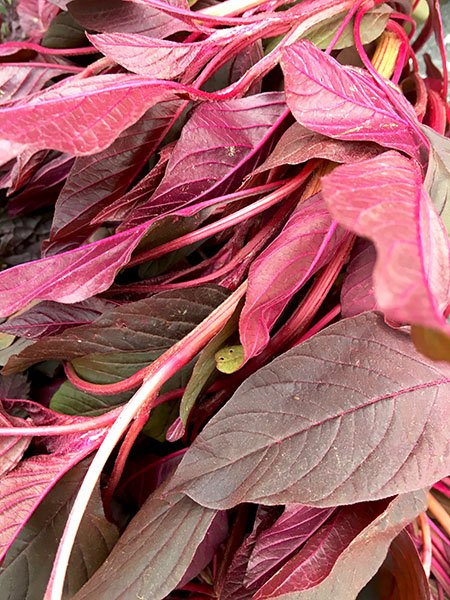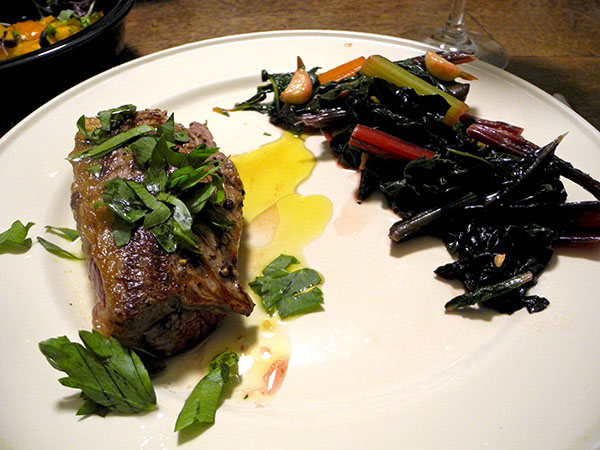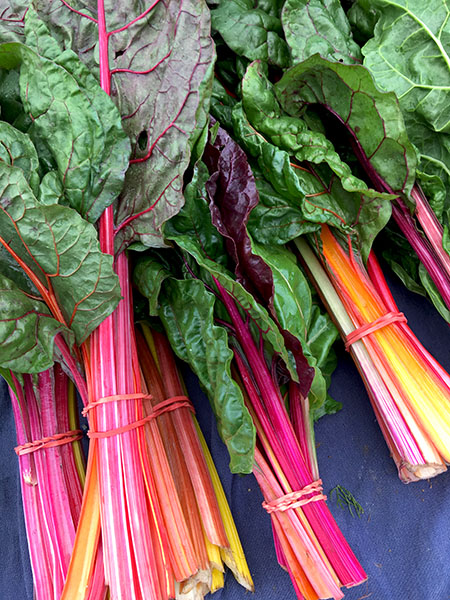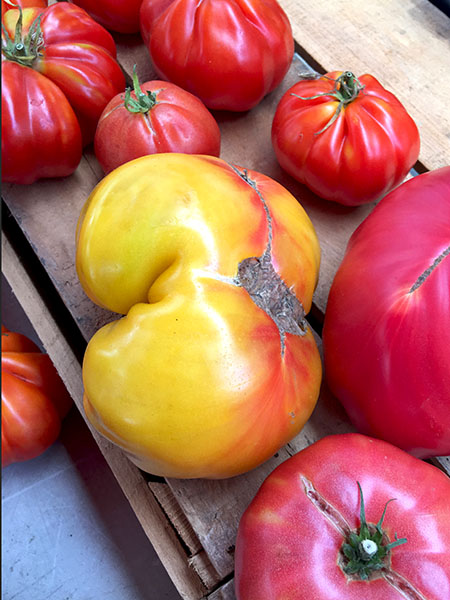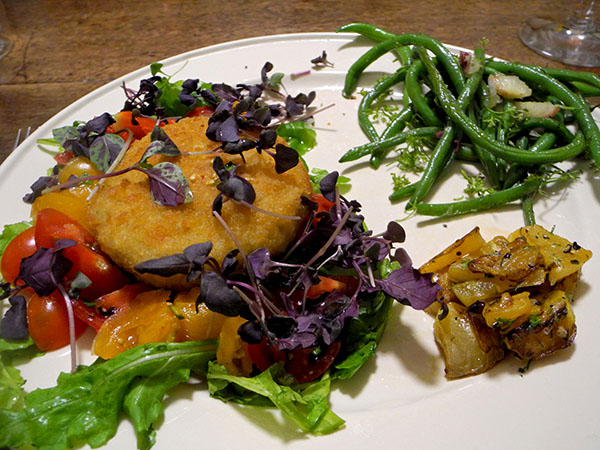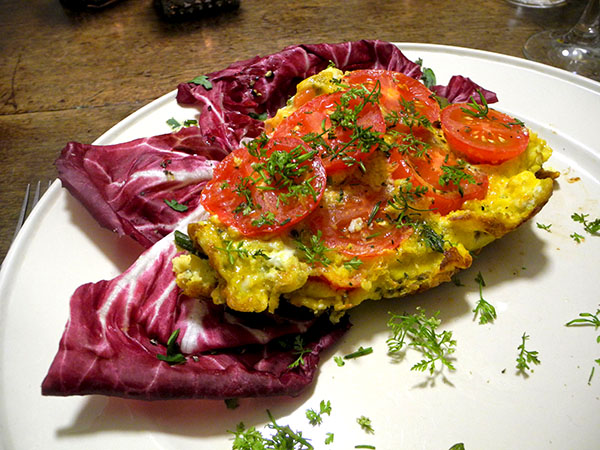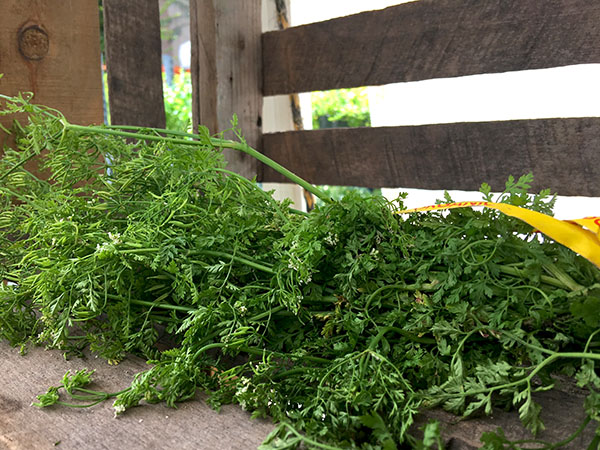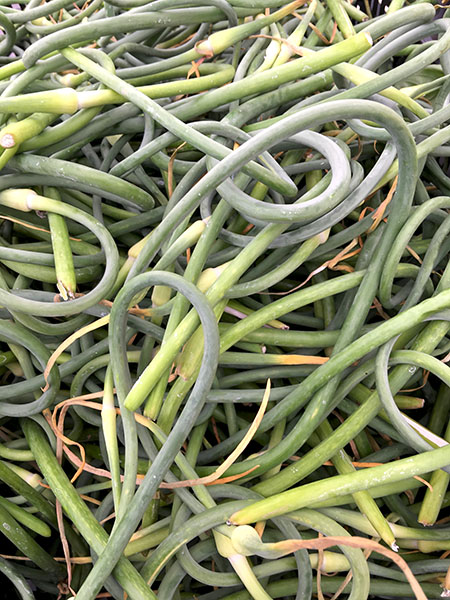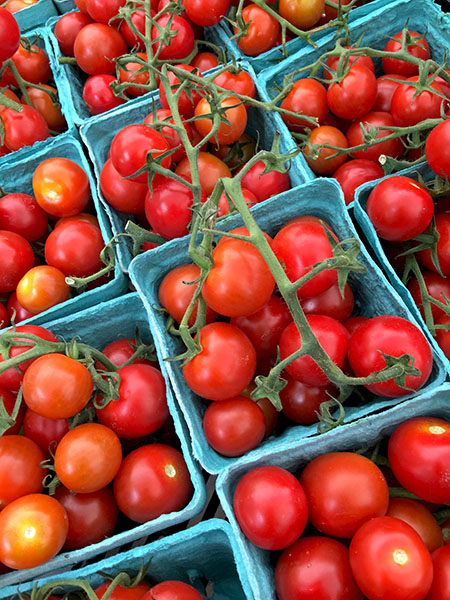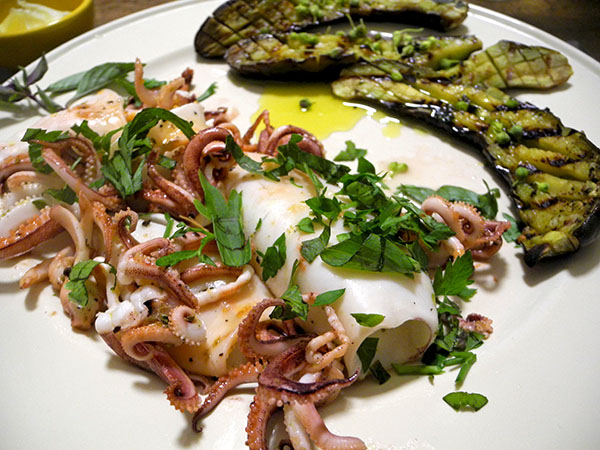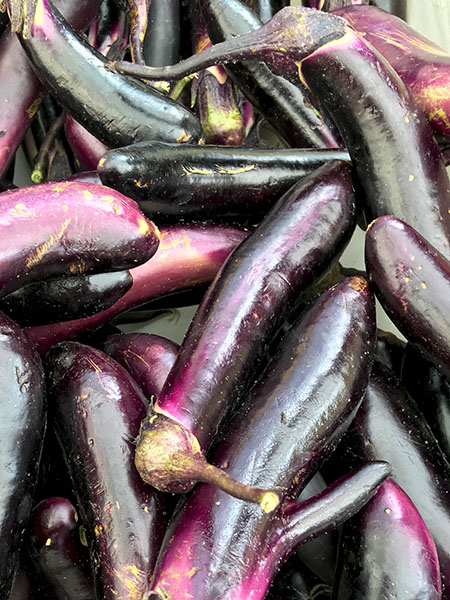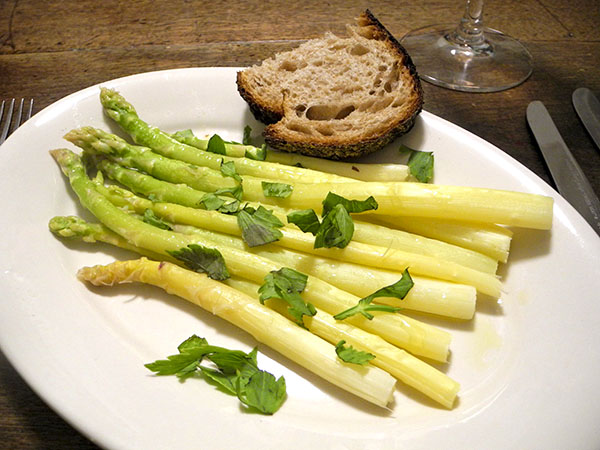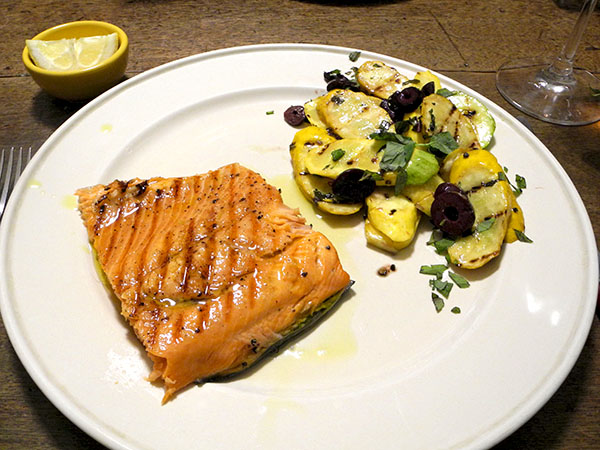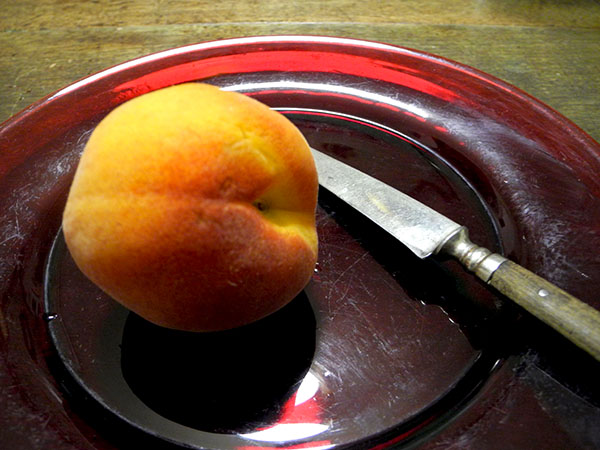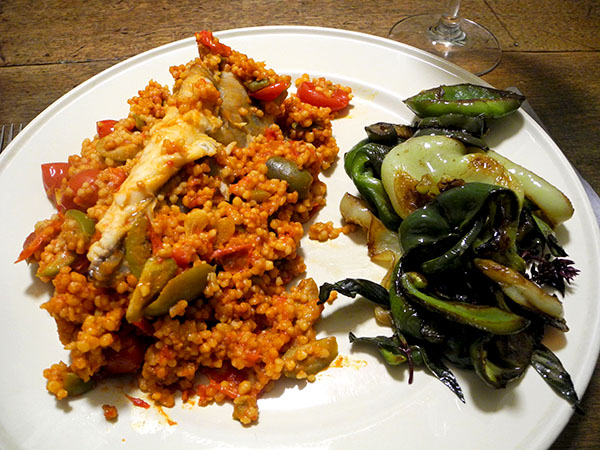
Turkey.
The meal just happened; there had been no plan to relate to the events of the day. Something seriously scary was occurring on the other side of the earth just as I was mentally assembling this meal of monkfish, incorporating 2 tails I had purchased in the Greenmarket just after noon. I was still ignorant of what was going on in Anatolia. But because I liked this scary-looking fish, and because Barry and I had both enjoyed its treatment in this Sicilian formula several times before, I had already decided on a recipe that quite literally stretched beyond the European continental littoral, although the music programming for the meal came later.
The news breaking throughout the day, and evening, inevitably formed a prominent backdrop to our simple plates of monkfish, couscous, and sweet peppers, the recipes and the music relating, although at a considerable remove, to the geographical, political, and cultural environment in which a governmental coup was unfolding.
So, yes, I’m talking about couscous, and in this case a rather classic Sicilian dish little known outside la Regione Siciliana (or Rome), which incorporates a wonderful ingredient usually associated only with the cultures of North Africa, and, to a lesser extent, the middle east.
Which gets us back to Turkey.
The music, celebrating complexity, diversity, and beauty of the culture of the Levant, was a conscious decision.
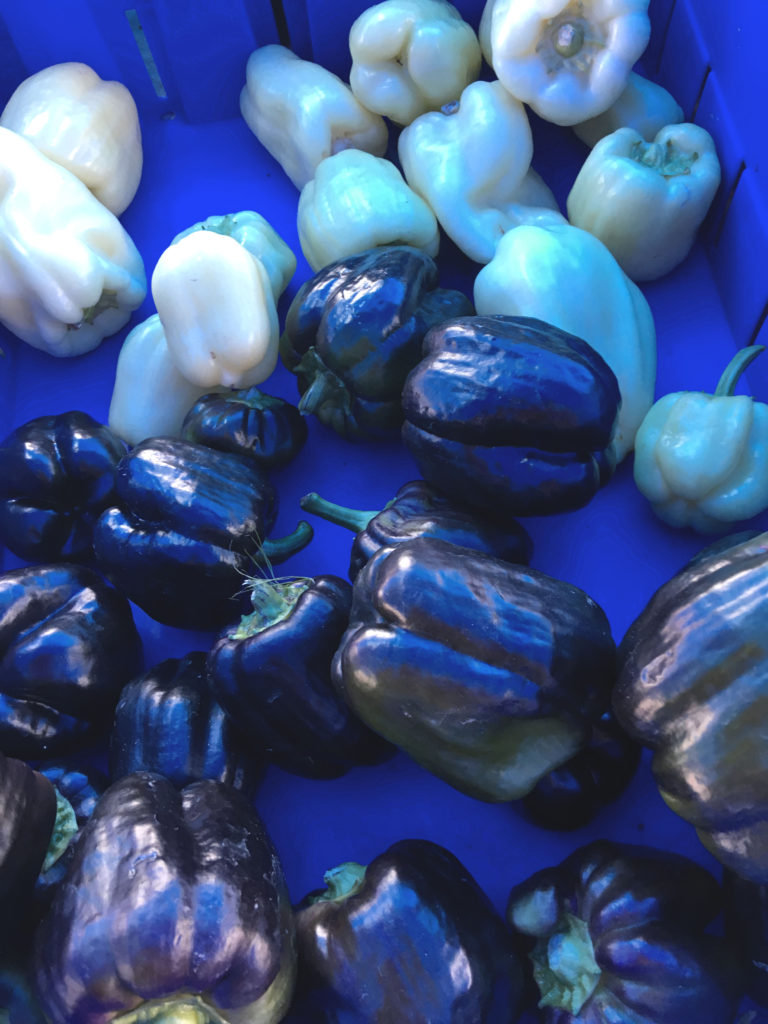
a farm stand’s colored awnings can cast an unworldly light on vegetables
The preparation of the early season peppers which I picked up at the market the same day I found the fish may not have been particularly Mediterranean, but I’m very fond of both the taste and the process.
- two 8 1/2-ounce monkfish tails from Pura Vida Fisheries, prepared using a David Pasternak recipe which includes M’hamsa Couscous from Tunisia (purchased at Whole Foods), olive oil, sliced garlic from Whole Foods, one and a half 16-ounce cans of superb Mutti baby Roma tomatoes from Eataly (also available at Whole Foods), and cracked Sicilian green olives from Whole Foods, and almost all of one whole crushed dried Itria-Sirissi chili (peperoncino di Sardegna intero from Buon Italia), the fish cooked, because of its size, much longer than specified in the recipe (I think I went with 15 minutes)
- a dozen or so small black and white (actually a deep purple and a creamy pale green) bell peppers, from Norwich Meadows Farm, stemmed, split, seeded, the pits removed, sliced lengthwise 2 or 3 times, fried for a few minutes in olive oil inside a steel pan while pressed under a weighted iron pan, skin side down, until blistered, then turned and fried, again under the pan, for another minute or so, a small handful of washed and dried leaves and tender stems of some whole Thai basil from Norwich Meadows Farm and a splash of (medium quality) balsamic vinegar added to the pan, stirred for a few seconds until the herb was wilted and the vinegar had sort of exploded in the heated oil, removed from the heat and served beside the fish [I did this in 2 batches, because, in my hurry, I had started with a pan too small to handle all of the peppers at once]
- the wine was a French (Provence) rosé, Famille Sumeire Château Coussin Le Rosé de S. Méditerranée 2015, from Chelsea Wine Vault
- the music was the Jordi Savall album, ‘Istanbul’, followed by his ‘Orient-Occident’, both with Hespèrion XXI
